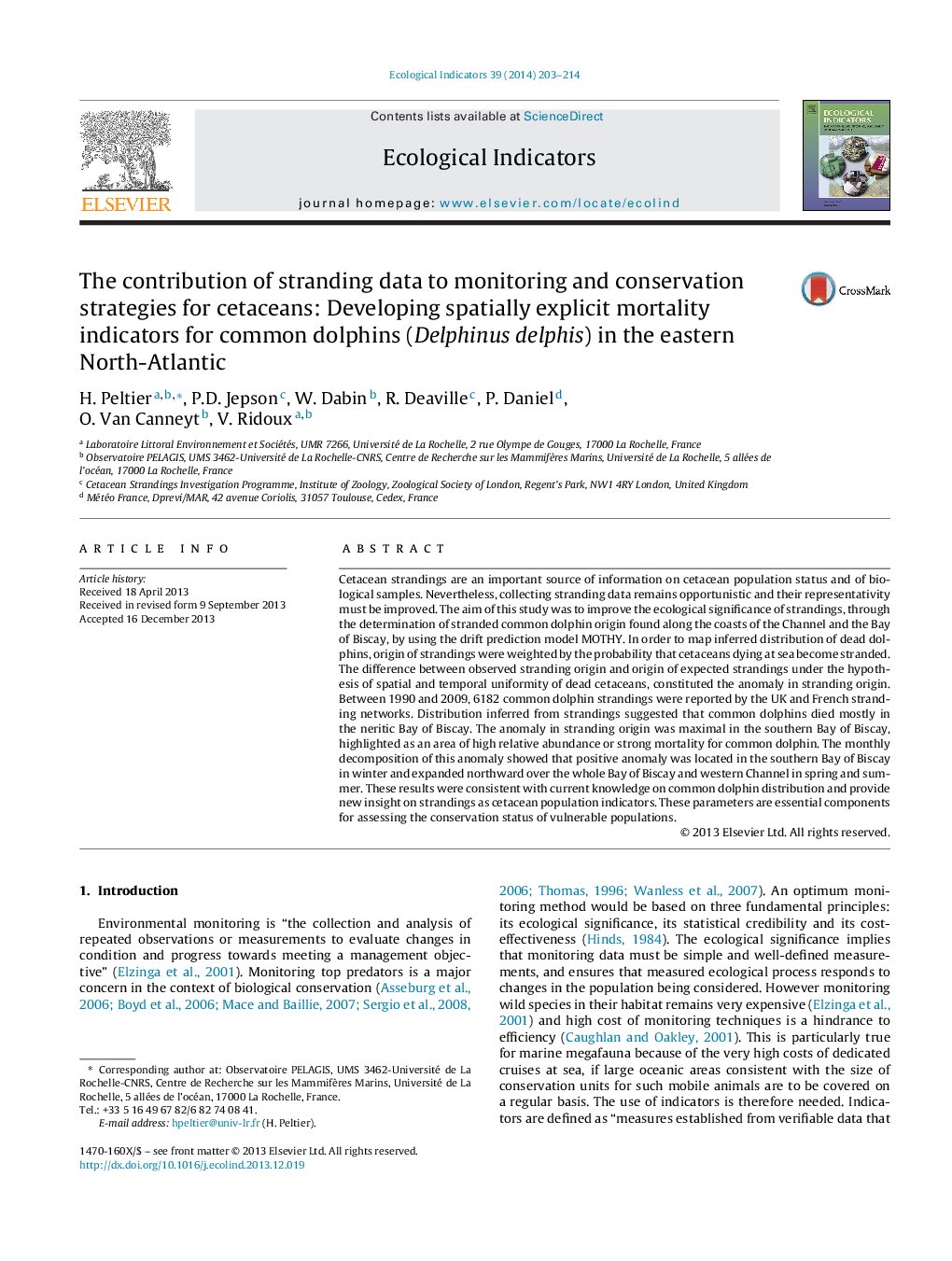| Article ID | Journal | Published Year | Pages | File Type |
|---|---|---|---|---|
| 6295440 | Ecological Indicators | 2014 | 12 Pages |
Abstract
Cetacean strandings are an important source of information on cetacean population status and of biological samples. Nevertheless, collecting stranding data remains opportunistic and their representativity must be improved. The aim of this study was to improve the ecological significance of strandings, through the determination of stranded common dolphin origin found along the coasts of the Channel and the Bay of Biscay, by using the drift prediction model MOTHY. In order to map inferred distribution of dead dolphins, origin of strandings were weighted by the probability that cetaceans dying at sea become stranded. The difference between observed stranding origin and origin of expected strandings under the hypothesis of spatial and temporal uniformity of dead cetaceans, constituted the anomaly in stranding origin. Between 1990 and 2009, 6182 common dolphin strandings were reported by the UK and French stranding networks. Distribution inferred from strandings suggested that common dolphins died mostly in the neritic Bay of Biscay. The anomaly in stranding origin was maximal in the southern Bay of Biscay, highlighted as an area of high relative abundance or strong mortality for common dolphin. The monthly decomposition of this anomaly showed that positive anomaly was located in the southern Bay of Biscay in winter and expanded northward over the whole Bay of Biscay and western Channel in spring and summer. These results were consistent with current knowledge on common dolphin distribution and provide new insight on strandings as cetacean population indicators. These parameters are essential components for assessing the conservation status of vulnerable populations.
Related Topics
Life Sciences
Agricultural and Biological Sciences
Ecology, Evolution, Behavior and Systematics
Authors
H. Peltier, P.D. Jepson, W. Dabin, R. Deaville, P. Daniel, O. Van Canneyt, V. Ridoux,
